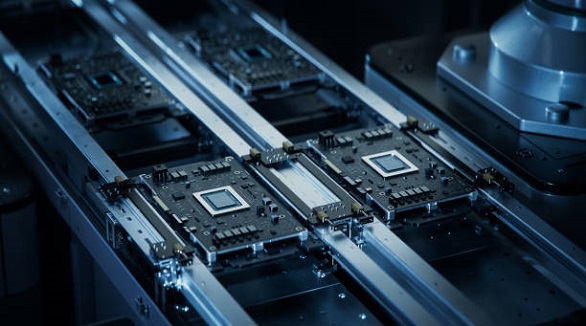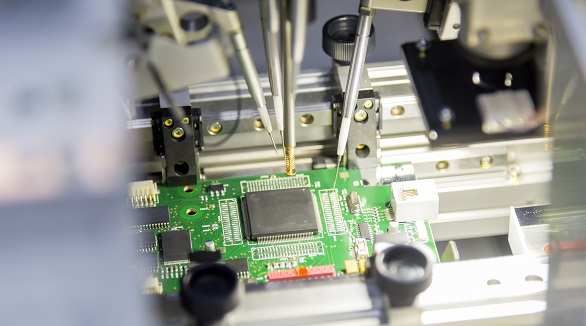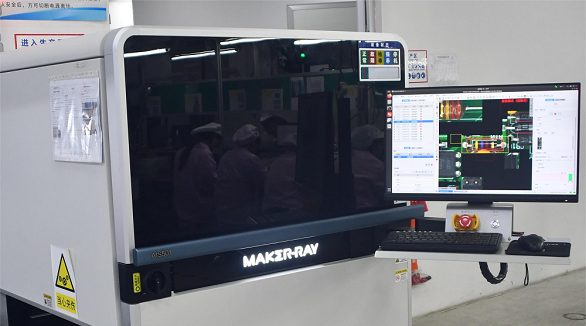How PCB Test Fixtures Work?
PCB test fixtures provide essential connections for precise testing, ensuring PCBs meet design specs and allowing seamless production and quality control.
The manufacturing process of Printed Circuit Boards (PCBs) relies on vital test fixtures known as Printed Circuit Board (PCB) test fixtures to establish that final boards satisfy their design specifications. Test fixtures provide a connection path between testing devices and UUTs to achieve precise testing with maximum return on investment through specific design focus. This document examines the operation of PCB test fixtures alongside their fundamental elements as well as different fixture varieties and testing interface procedures and their critical importance during the workflow.

The special platform known as a PCB test fixture enables the following operations:
Test fixtures serve to both support and establish electrical contact with PCBs that need evaluation.
A test fixture serves to provide electrical connectivity between the Under Test Unit and various external test equipment.
The test fixture enables both stimulus signal application to the under test unit and measurement acquisition.
The fixture supports safe insertion along with safe removal of the UUT throughout its operation.
The testing process becomes safe while maintaining repeatable and reproducible conditions through this device.
The design quality of fixtures enables smooth execution of production testing as well as quality control screenings for batch-tested PCBs.
Key Components of a Test Fixture
Knowledge of the complete elements in a PCB test fixture enables better comprehension of its operational capacity.
1. A UUT connects to electric currents through the test head, also known as the bed-of-nails. Pogo pins as part of the test head array allow spring-loaded access to every required node during PCB testing.
2. The interface board brings test head probe connections to a connector which links up to test instrumentation through signal paths that span wide and compressed connection areas. Signal conditioning along with fixing control and test debugging form part of the interface board components.
3. The reliable electrical connection of the UUT requires mounting hardware consisting of brackets together with guides and toggles and clamps which secure the UUT to test probes for precise alignment and necessary contact force.
4. A fixture frame along with enclosure functions as the protective housing system that provides mounting plates for test electronics and moving components and UUT handling hardware.
Types of Test Fixtures
Testing requirements and PCB design determine which test fixture type should be used.
Bed of Nails Fixture: The bed of nails fixture represents the main fixture type which uses spring-loaded pins to connect test points present on the printed circuit board.
Edge Connector Fixture: UUTs connect to the Edge Connector Fixture through its plug-in-card configuration which exposes edge access test points.
Clamshell Fixture: With a clamshell fixture the operator can use testing stations on both sides of an open fixture due to its two hinged components with test heads.
Vacuum Fixture: Which locks the UUT with vacuum pressure instead of requiring mechanical clamp mechanisms.
Custom Fixtures: Designed for specialized applications such as RF or vibration testing.
Interfacing Fixtures to Test Instruments
Test fixtures operate as vital connection points that bridge test equipment and PCB under test by enabling several test connections.
Test System Interface: Connects test equipment through multi-pin connectors that allow parallel operation when more throughput is needed.
UUT Interface: Provides safe electrical junctions between test probes and PCB nodes to protect the PCB from damage.
Control and Monitoring: The automation systems control and monitor activities with digital buses commonly using Ethernet as one of their protocols.
Power Supply: The fixture requires an electrical power supply which simultaneously powers all electronics and probe movement mechanisms.
Safety Interlocks: Guarantees testing under safe conditions.
Role of Test Fixtures in PCB Testing Workflow
PCB test fixtures serve an essential part throughout the testing process beginning with prototype evaluation through manufacturing phases.
The first stage of PCB prototype evaluation serves to verify the design composition through prototype examination.
The evaluation phase analyzes requirements for accessing testing nodes throughout the production phase.
Manufacturers use the PCB design and test needs to create personalized test fixtures.
The manufacturing process undergoes optimization because of this fixture.
Production Testing: Deployed for efficient and high-speed testing in production.
Technical support allows users to detect and resolve issues found within printed circuit boards.
Key Benefits of Using Test Fixtures
Test fixtures for PCBs serve vital purposes because they provide various essential advantages.
Repeatable Testing: Ensures consistent outcomes with precise UUT positioning.
Test fixtures support efficient device loading/unloading processes and enable connection to multiple testing mechanisms simultaneously.
Test fixtures enable probe access to embedded nodes that are located within multilayer PCBs.
The system operates hands-free to handle and test components.
The device performs quick diagnosis monitoring through its built-in debugging features.
The testing instrument provides better protection to delicate electronic devices than manual probe methods.
The design can endure hundreds of thousands of operational cycles without problems.
The system enables expansion of test interface capability whenever more hardware needs to be added.
Challenges and Trends in Test Fixture Design
Approximately two notable design challenges in PCB test fixtures include signal integrity management, heat dissipation requirements and life cycle extension needs. The future of test fixtures will become better due to modern technological developments including additive manufacturing and automated systems and augmented reality and wireless interface implementation.

Test fixtures for PCBs serve as essential equipment which support effective testing throughout product development up until production volume. Test plans execute without interruptions due to specially designed electromechanical interfaces together with effective handling methods. Test fixtures hold essential value in PCB testing operations because of ongoing innovations and strategic funding initiatives.
Hot Tags:
Contact us

If you can't find what you're looking for, please contact us.
Article

In-Circuit Testing ensures PCB reliability by verifying component integrity and connections, with advantages in accuracy and coverage, but high setup costs.

Flying Probe Testing (FPT) is ideal for low-volume PCB assemblies. It uses mobile probes and advanced features like PDM and HVS for precise, cost-effective detection of shorts and opens.

These SMT PCB assembly methods are involved, ensuring that several defects are detected. This includes the use of Automated Optical Inspection, In-Circuit Testing, and Automated X-ray Inspection. The combination of these methods is beneficial in facilitating an optimal inspection process.